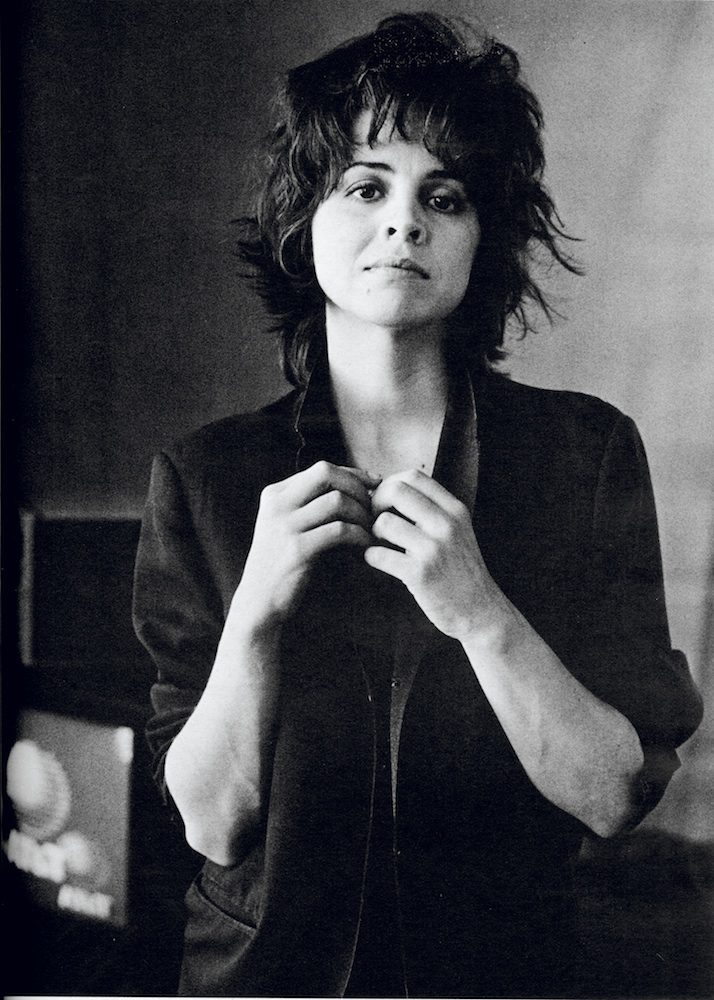
‘Gretchen Bender moved to New York in 1978 and had her first solo show there in 1983, when she was thirty-two. She fast became a fixture of an East Village art scene centered on the Nature Morte gallery and the tireless publishing and curating efforts of Tricia Collins and Richard Milazzo, a milieu that featured artists such as Sarah Charlesworth, Jessica Diamond, Kevin Larmon, Peter Nagy, Steven Parrino, David Robbins, and Julia Wachtel. Perhaps not all of those names ring a bell, and it’s likely Bender’s wouldn’t have, either, only a few years ago. Which raises the question, Why was she almost lost? And why has she now been suddenly rediscovered?
‘As her posthumous retrospective at Red Bull Arts New York testifies, Bender pioneered new ways of using information management as an artistic medium. Starting out in Washington, DC, as a member of a Marxist-feminist printmaking collective, she quickly expanded her arsenal to include electronic as well as other types of screens. She worked hard to locate her art on the cutting edge of video technology, hanging around the labs at the New York Institute of Technology and researching the latest in vector graphics and computer animation. In her electronic works, she graduated quickly from single-channel, single-monitor video, as in Reality Fever, 1983, to pieces that deploy several channels across any number of screens. Bender’s most elaborate version of what she dubbed “electronic theater,” the eighteen-minute long Total Recall, 1987, not only spreads eight channels across twenty-four monitors but also includes projections onto three large screens.
‘The Red Bull show is split roughly between static wall works and Bender’s progressively more expansive video pieces. Half the galleries are filled with laminated color photographs mounted on Masonite or tin and arranged in different groupings. Bender’s stark juxtapositions pit sci-fi movie stills against grisly war-correspondent photos and shots of advertising spokespeople next to notable artworks of the time (by the likes of Jonathan Borofsky, A. R. Penck, or David Salle). Most of the other rooms resemble televisual Laundromats, each lined with a phalanx of TV monitors on which tumble talking heads, narrative fragments, sales pitches, live news segments, athletic matches, ecstatic game-show revelations, and twirling computer graphics.
‘A riddle characterizes all of Bender’s output. If TV’s deluge of information flattens distinctions and evacuates meaning, folding everything from the most banal to the most urgent into its undifferentiated flow, how is it that this only strengthens, rather than diminishes, its relation to power? Bender was careful to temper desensitizing excess with regular injections of artificial exhilaration. Stupor is countered by hyperbole, courtesy of regularly unleashed attention-grabbing techniques: swooping and exploding visuals, music that alternates between the solemn and the frenetic. We see journalists comb battle sites and families celebrate their new breakfast cereal while animated corporate logos repeatedly perform flyovers. Everything is clichéd, yet—like the vitrine-style refrigerators, replete with Red Bull energy drinks, that dot the exhibition space—also seems geared to accelerate breathing and pulse rates.
‘Does Bender’s work overwhelm and incapacitate or does it spark critical consciousness? In an unsatisfying way, both. Viewers are definitely made hyperaware of just how underequipped they are in the face of torrential corporate-sponsored information. In Aggressive Witness—Active Participant, 1990, eight TV sets are lined up on the wall, each tuned to a different live broadcast. On the glass of each set, a phrase appears in vinyl lettering: DEATH SQUAD BUDGET, PEOPLE WITH AIDS, NO CRITICISM. The unmoving, all-caps seriousness of the phrases literally defies the nonstop parade of pedestrian programming underneath. But that’s the problem: While there are chance moments when the two seem to syntactically relate, mostly what the viewer confronts is a yawning disconnect between issues of monumental importance and the distraction induced by information’s tireless temporal undertow.
‘Which makes Bender’s oeuvre less about television per se than about being constantly targeted by multiple information sources at once. Sound familiar? Right now on my computer screen, there are several windows stacked one atop the other—Word documents, a couple of open folders, available tabs arrayed on my internet browser, some PDFs, my email. I pride myself on being a manager of information, and at the same time feel trapped in a permanent management crisis. In our attention economy of endless scanning and scrolling, information suspends subjects between vigilant attentiveness and numbing exhaustion, evoking the experience not so much of television as of a later invention: entertainment systems that combine game controllers with interactive video or computer displays.
‘In the end, this helps explain why Bender could have fallen off the art-world radar in the middle of the 1990s, only to resurface today. As her aesthetic became more high-tech, the art world moved instead toward the lower depths of abjection, scatter art, and slackerdom. Moreover, Bender’s view of corporate culture as a homogenizing onslaught was at odds with the premillennial interest in the cultural politics of difference as well as with the consensus view that VCRs, cable TV, and the internet equaled a dawning era of consumer empowerment. Today, of course, information culture is no longer greeted with such across-the-board optimism. Hence the renewed interest in Bender’s more blatantly corporate, dystopian vision.
‘Interesting, then, that it’s a corporate sponsor, Red Bull, that has enthusiastically stepped up to not only assemble Bender’s body of work but also make the substantial dollar investment in digitally restoring such a complex, multivideo Gesamtkunstwerk as Total Recall. (Credit for originally unearthing Bender goes not to Red Bull but to the artist Philip Vanderhyden, who in 2012 curated a survey of Bender’s all-but-lost video pieces that traveled from the Poor Farm in Little Wolf, Wisconsin, to the Kitchen in New York the following year.) Bender herself was not against working with corporate clients—quite the opposite: She directed music videos for bands like Babes in Toyland and also came up with the original opening credits for the Fox TV show America’s Most Wanted. “I’m glad if I get corporate support,” she told her friend Cindy Sherman in a 1987 Bomb magazine interview. “I’m trying to infiltrate and mimic the mainstream media.” That Red Bull in turn has been so welcoming of Bender’s infiltration perhaps reflects poorly on her work’s critical aspirations. More likely, though, it’s a testament to the corporate strategy of embracing critique as a way to accrue cultural capital and “edge.”
‘Sadly, Bender fell victim to cancer the same year that Google made its initial public offering and a year before TheFacebook became facebook.com. What’s most prescient about her art is the way it intuited how representation was coming under siege; how the time needed to reflect on the spatial and metaphoric relationship between the manifest signifier and its latent, hermeneutically obtained signified was being paved over by communication’s more lateral and metonymic temporality: the fast-paced attention and reaction to its unspooling ticker tape of information. Since then, pragmatics has seemingly overtaken semantics. Beyond readers and viewers, the subjects of culture today are media users. Media now constitutes a logistical system as well as a meaning system, allowing for not just the circulation of content but the organization and management of everyday activities: desktops, contacts, calendars, carts, bookmarks, playlists, wish lists, folders, filters, friends. Not just representing our world back to us, corporate media now seemingly license our actions within it. What one would give to see Bender parse such a state of affairs.’ — Lane Relyea, Artforum
_____
Further
Gretchen Bender @ Wikipedia
The New Gretchen Bender Survey Is a Triumph, Revealing a Visionary Artist
Who was Gretchen Bender?
Pioneering Video Artist Gretchen Bender Predicted Our Obsession with Screens
Gretchen Bender, by Dan Cameron
Gretchen Bender’s Video Art Predicted the Bleak Future of Mass Media
A Nod to Pioneering Artist Gretchen Bender in New York
Gretchen Bender’s ‘Visual Worlds at the Century’s End’
Disinformation and the Death Star: The Legacy of Gretchen Bender
GRETCHEN BENDER: STEPPING INTO THE PARTICLE UNIVERSE
Moving Target
GRETCHEN BENDER, by Sarah Nicole Prickett
A Finding Aid to the Gretchen Bender papers, 1980-2004
____
Extras
Salon | Artist Talk | On Gretchen Bender
Philip Vanderhyden on curating Gretchen Bender
Panel Discussion of “Gretchen Bender: Tracking the Thrill”
RIRKRIT TIRAVANIJA RECALLS GRETCHEN BENDER’S ICONIC ‘TOTAL RECALL’
_____
Interview
from BOMB

Cindy Sherman It seems as if your critical target is Corporate America because your work isolates and diffuses corporate logos and television advertising. How do you feel about a corporation buying one of your works?
Gretchen Bender I’d feel fine about it. I think it’s to their great credit that one corporation has bought my work. Didn’t Reagan say the corporate sector ought to support the arts? I’m trying to infiltrate and mimic the mainstream media. I’m glad if I get corporate support.
CS Do you think the work will enlighten them?
GB I think that maybe some of the people who work in the corporation might actually be surprised. But I am not that optimistic. I think, basically that by the time a corporation has decided to buy my work, that it is a carcass. The effectiveness of the work has already left it and only the structure remains. It’s already been neutralized. In general, I assume corporations buy work once it is politically neutralized.
CS How does it become neutralized? Time?
GB Time—like after ten minutes! I think that the time limit to media-oriented artwork is an element that many media involved artists are unwilling to confront: art as I practice it or develop my ideas or aesthetics, has to do with a temporal limit to its meaningfulness in the culture—and that’s real tough. It’s hard to make art through the use of guerrilla tactics, where the only constant to the style you develop is the necessity to change it. Style gets absorbed really fast by the culture, basically by absorbing the formal elements or the structure and then subverting the content. You have to make some kind of break or glitch in the media somewhere else with a different style and shove your content into it there. It’s constantly having to accept the fact that your work will lose its strength. You just go on, learning to vary strategies; to recognize when to go underground and when to emerge.
CS Second guessing.
GB Accepting the fact that your work is going to become neutralized—faster than you ever dreamed. It’s a really weird feeling but it’s a given, for me, at this point, so I’m just going with the given in that situation and trying to think on my feet.
CS I remember seeing the piece you did with all the movie titles on it.
GB None of the films had been released.
CS At the time, none of the titles made any sense to me. Later I saw the piece and it was, “Oh, yeah, I know every one of those movies!” At first viewing the titles sounded unbelievable, ridiculous.
GB There was a built in obsolescence to that work, a definite time limit. When I showed it afterthe films came out the reaction was already, “Did I see that movie? What is that title? Do I remember that?” Another level that sculpture was working on was the anticipatory quality—you’re going to learn something, or this movie is going to mean something … you want to know you have a desire—and the piece promotes these anticipations.
CS Just through the titles?
GB Yes, and I put special effect sparkles on it to heighten the anticipatory quality. The film industry has ad campaigns and gossip column items, to give you that anticipatory quality which I made more visually concise with the sparkles.
CS Did you randomly choose titles?
GB No, I got a list from Hollywood Reporter or Variety—the release dates for the next six months of all the films from the major film companies. We recognize the film industry as a very important part of our culture economically and aesthetically and I think it’s a whole area that should be provoked more. Film and its invocations are much more powerful instruments economically and politically in our lives than we seem aware of. We say we’re aware of it, but in a glib way.
CS Especially since most of the corporations who own movie companies also own TV stations and radio stations … and oil.
GB Own the world—the mechanisms that make the world run.
CS Do you choose the visual images for your work, for instance the strips from the TV printer that you used. Is that also arbitrary?
GB It’s not quite as arbitrary as is looks. I tend to want to depict all the computer graphics that are on the television because I think the next area of visual expansion and psychological repression is there. Also, Return of the Living Dead was a piece I did that included a video printout of the evening news the day Reagan visited Bitburg in 1985. The TV graphics on the newscast depicted stun gun torture by the police; child abuse by daycare center workers; Vietnam Memorial services and of course Reagan laying a wreath on the gravesite of German SS dead.
CS A storyboard.
GB Yes, it gave me pause.
CS When the space ship blew up about a year ago you were taping everything on television. Did you ever use that?
GB That happened when I had a TV piece up at Metro Pictures. There were 12 monitors on the wall, each tuned to a different channel and each stenciled with the name of an artist in the show. When the space shuttle blew up, the piece became a macabre choreography of each network’s depiction of the space shuttle disaster.
CS What timing.
GB Brought to you by all of the artists in the show.
CS In that piece you were running regular television. I thought you were taping …
GB I started taping when the bombing of Libya happened. It was after the show and I had all the TV’s in my studio and a couple of VCR’s. I was working in the studio one afternoon and all of a sudden Libya was happening on all the different networks. I started taping that—NBC came on first with the scoop—it was a weird sense of …
CS Being right there.
GB Weird.
CS Did you first start working with video out of dissatisfaction with the static works? Did they evolve together?
GB It was a natural evolution going from the magazines and photos of the news. It seemed obvious to me that the next area was television which is an incredible goldmine for the flow of the pulse, the permutations that happen daily, in the culture.
CS You were using it anyway, taking photographs off the screen.
GB Yes, I started taking stills, incorporating film positives of popular art over images from broadcasting. I thought in the early ’80s you guys [Cindy Sherman, Barbara Kruger, Sarah Charlesworth, Richard Prince etc.] had done such important work on the print media—the photograph. And it seemed like the next area to similarly deconstruct was television. I quickly got caught up in the way in which TV moves, the current. The movement, not even the sequence, but the movement that flattened content. From that equivalent flow I tried to force some kind of consciousness of underlying patterns of social control.
CS It’s so strange being on this side of the interview.
GB I know, I feel I should start asking what you think.
CS Maybe you’ve already answered this but would you want to see the media affected by your work?
GB I don’t think the media is something that listens in the way that we’re talking about. I think of the media as a cannibalistic river. A flow or current that absorbs everything. It’s not “about.” There is no consciousness or mind. It’s about absorbing and converting.
CS What if your video tapes were on TV, say PBS, would that be defeating your purpose?
GB There are some very fine video artists who work effectively on public television. I’m taking a different tact. I’m trying to create an overview of an environment and at this point I’m not able to do it on one channel so I create a theatrical exposition of it with multiple channels. In the past three years, I’ve surrounded myself and the audience with an environment and then turned up the voltage—to create a criticality. I’ll mimic the media—but I’ll turn up the voltage on the currents so high that hopefully it will blast criticality out there.
___
Show
Total Recall (1987)
Evocative of the effects of a highly coordinated, techno-military image industry, Total Recall takes the form of a kind of electronic theater, one using familiar icons and effects culled from mass culture. Bender borrowed the title for the work after reading in Variety magazine that a film was being made based on the Philip K. Dick short story. Viewers see appropriated clips from Oliver Stone’s film Salvador (1986), Olympic athletes, military fighter jets, and corporate logos from American companies like GE and CBS, among other things. The onslaught of images enacted through Bender’s pioneering use of quick editing—carried along by a soundscape composed by Stuart Argabright—gestures to deep structural patterns and belief systems that govern the image stream. Bender coined the term sense-around to describe the heightened responsiveness that she aimed to engender through her media installations. Like many of her peers in the 1980s, Bender was concerned with the media landscape, but rather than extract and distill, she chose to multiply and amplify.
People in Pain (1988)
For the original work (which was unfortunately destroyed after Bender’s death), the artist began with a list of every Hollywood movie that was in production for a six-month period between 1987 and 1988. Bender then printed the titles in a uniform font onto hardened black vinyl that resembled the crumpled, glistening appearance of a trash bag. Some of the movies—Dirty Dancing, Fatal Attraction, Full Metal Jacket, and Predator, for instance—are remembered today. Most are forgotten. Others, such as Word of Honor and Cry Moon, were never released at all. The work comments on the non-stop flow of often mindless entertainment media that inundates American culture every year. The titles are flattened out in presentation so that no single film is privileged over another: they’re all just part of a metaphorical trash flow.
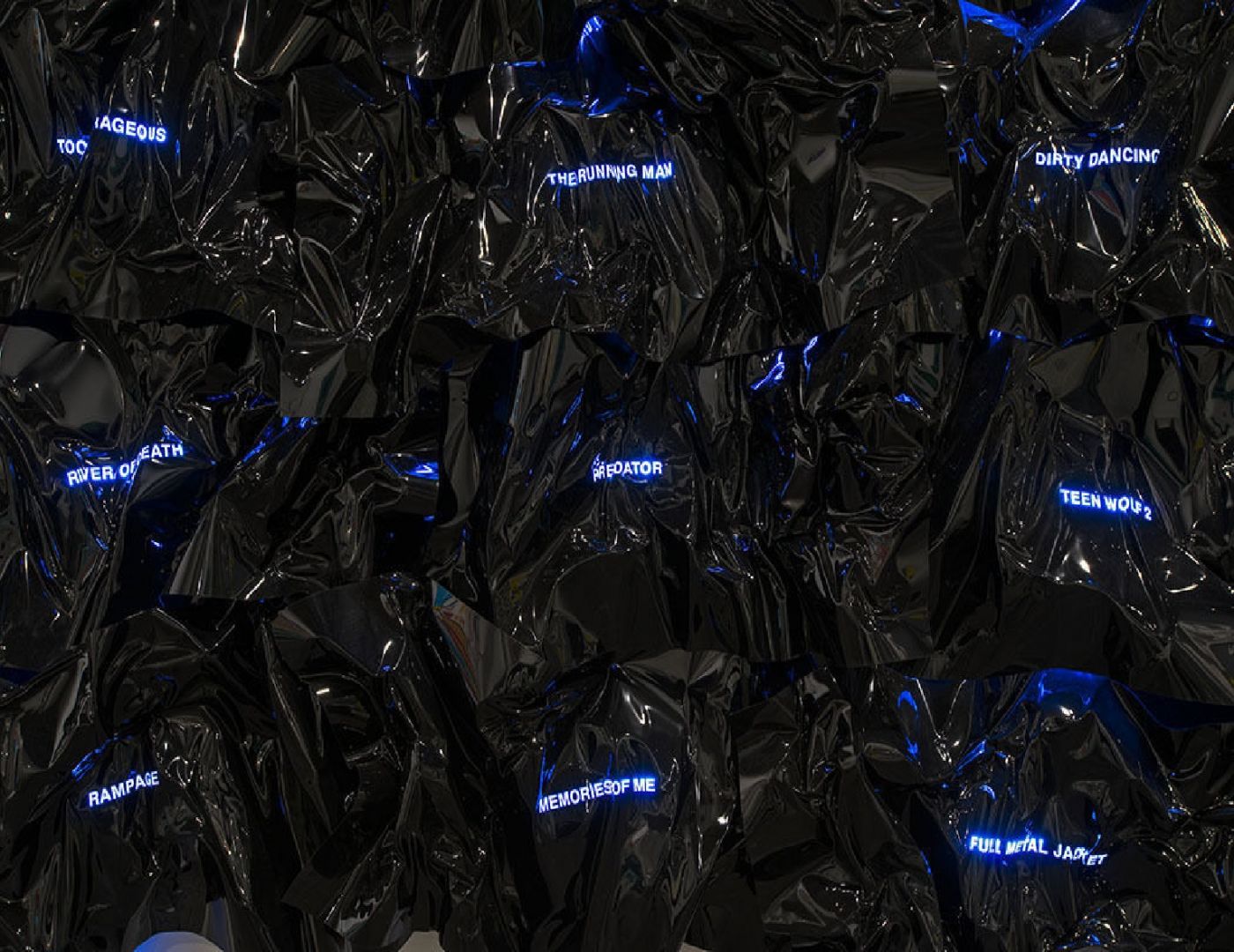
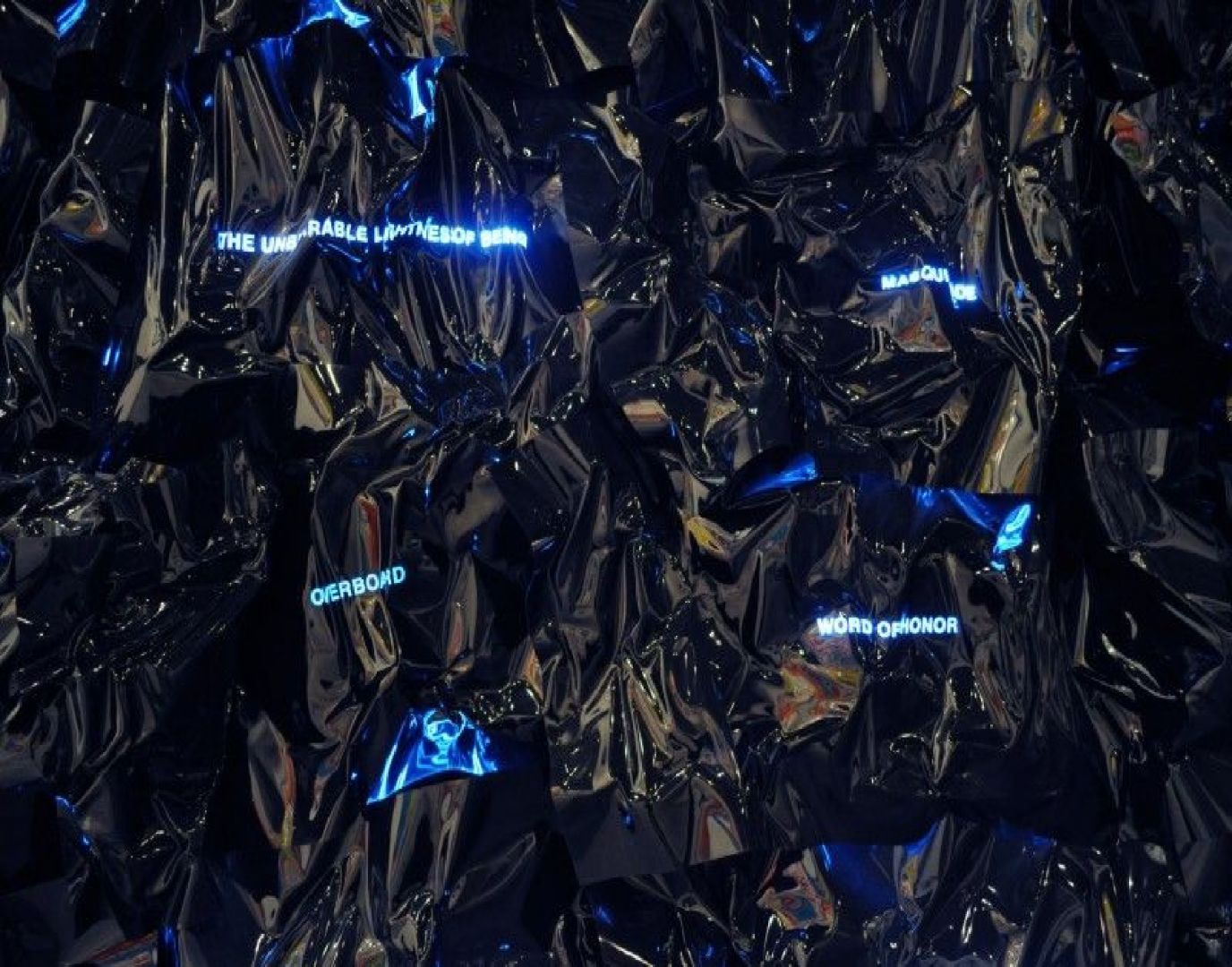
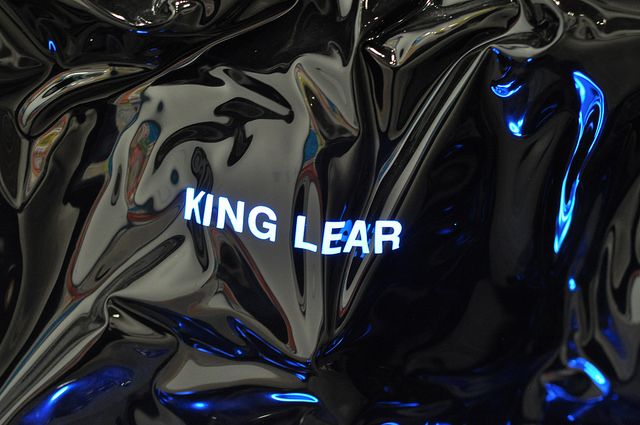
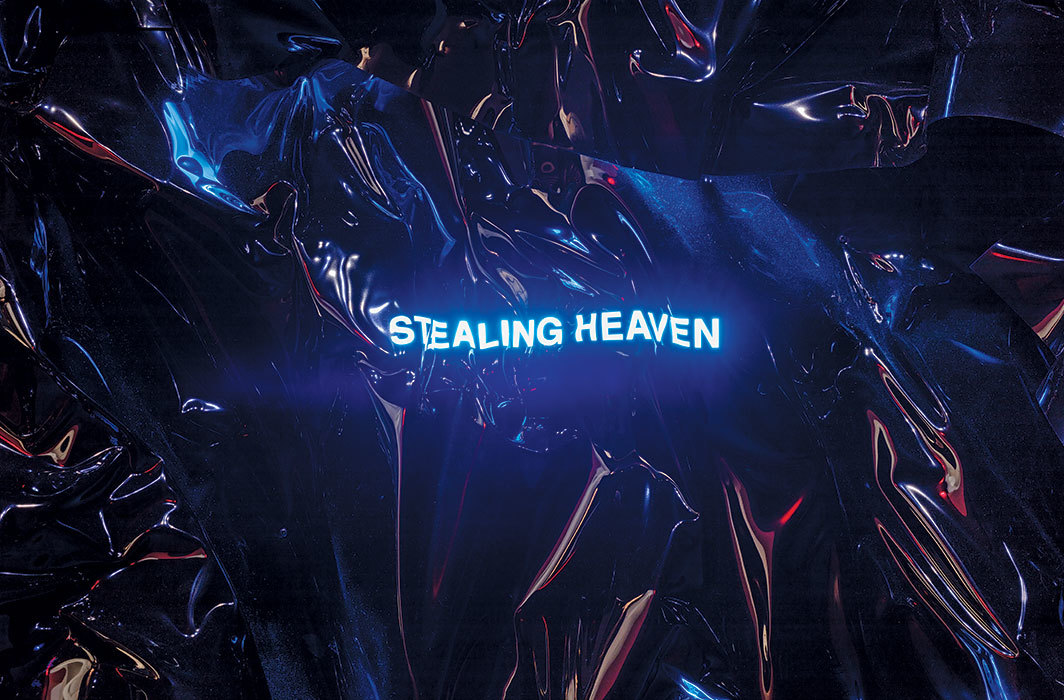
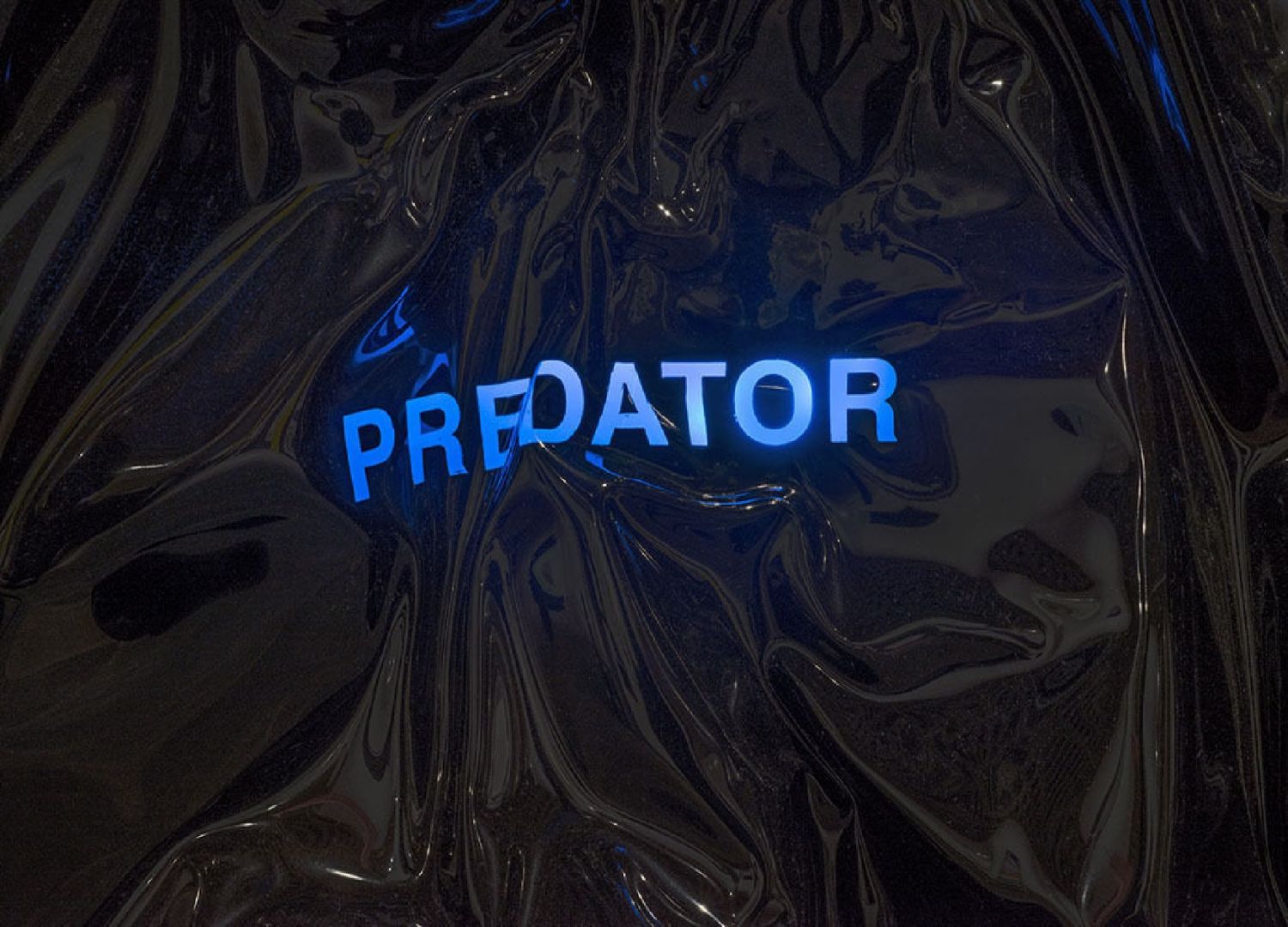


Untitled (the pleasure is back I) (1982)

Wild Dead I, II, III (Danceteria Version) (1984)
An early stab at two-channel video shown in the exhibition, Wild Dead I, II, III (Danceteria Version), was produced in 1984, the same year AT&T was forced to start divesting its holdings after an antitrust lawsuit begun in the 1970s, and includes splices from David Cronenberg’s Videodrome (1983) with images of AT&T’s new Earth-shaped logo. In Cronenberg’s dystopian horror, TV viewers are unwittingly brainwashed by their sets, consuming seemingly banal broadcasts that later induce violent hallucinations and desires. Bender’s mashup presents Cronenberg’s fiction as reality, as scenes from the film are punctuated by menacing flashes of the AT&T globe—an indication of the company’s vast ambition and a symbol Bender derided as the “Death Star.” The ensemble, set to a frenetic, pulsating score by postpunk musicians Michael Diekmann and Stuart Argabright, comments on the outsize power of telecommunications companies over the American public—a power that is arguably greater today, in light of antitrust’s unraveling in the ’90s and new forms of Web monopoly.
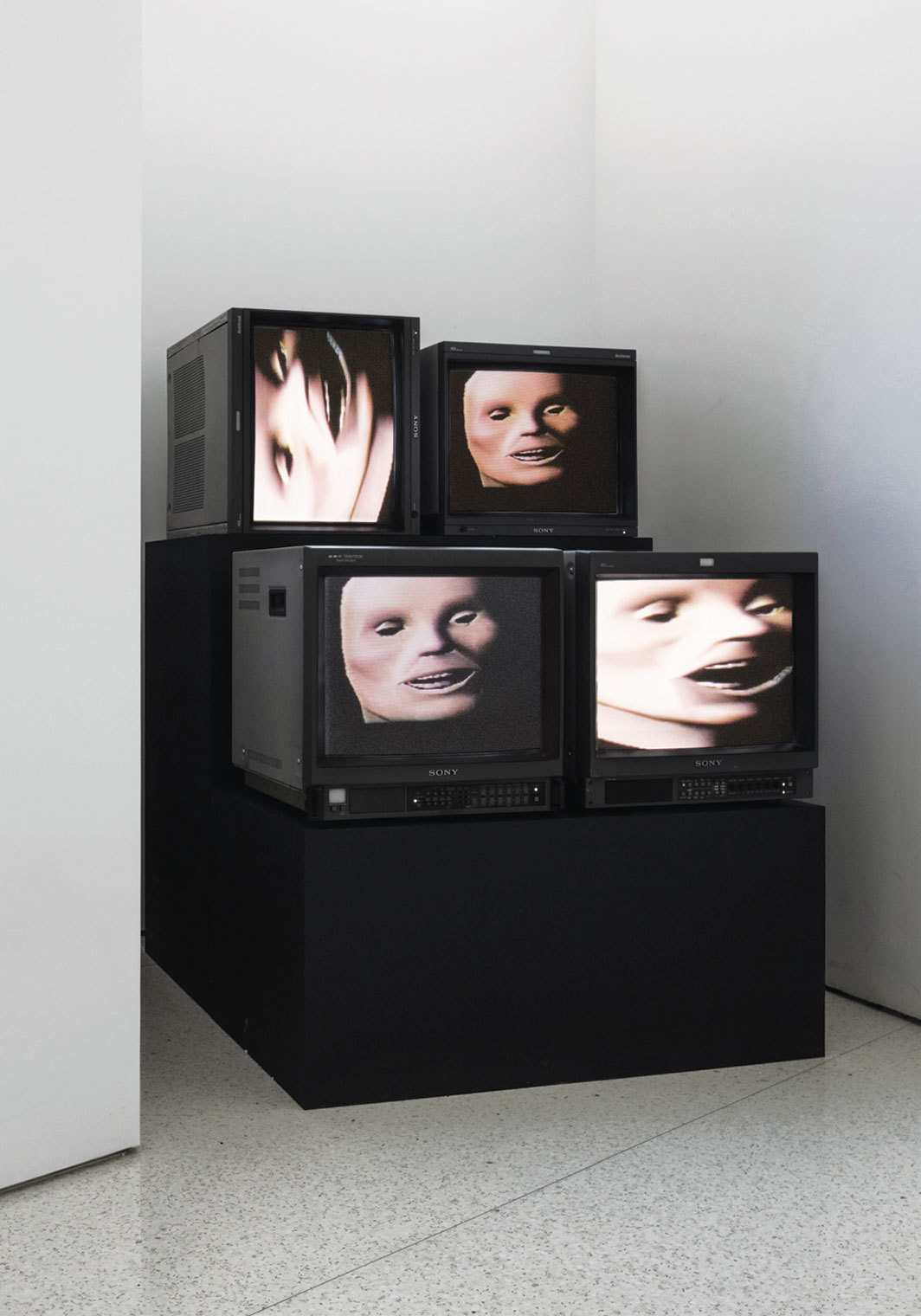
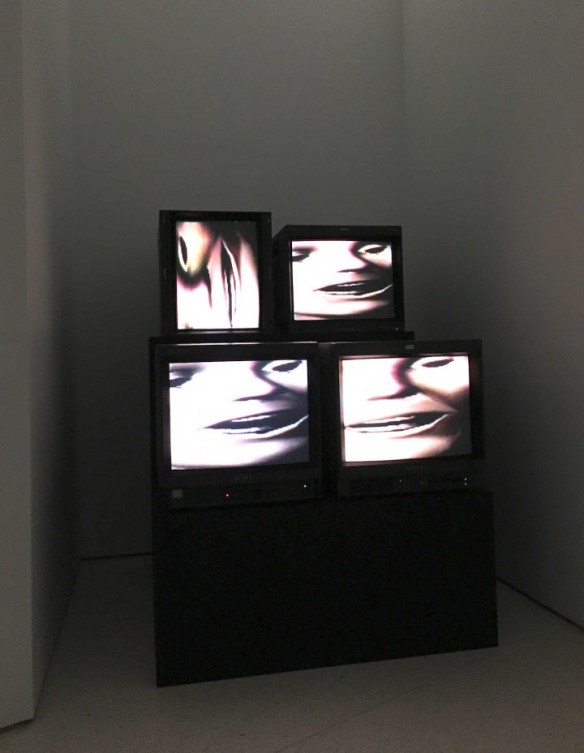
TV, Text, and Image (Metro Pictures Version) (1990)
Live television broadcast on nine monitors, vinyl lettering, and shelves.
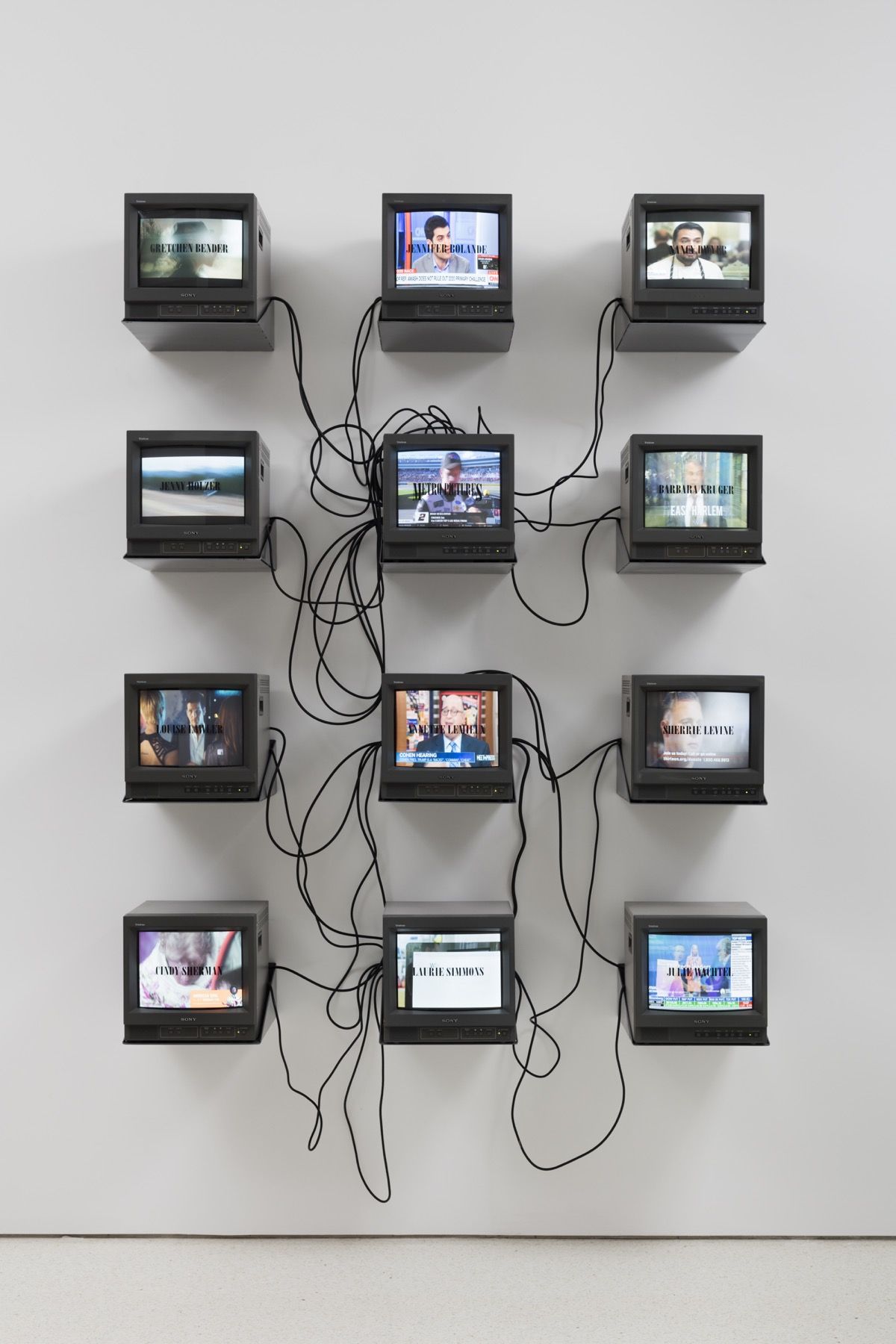
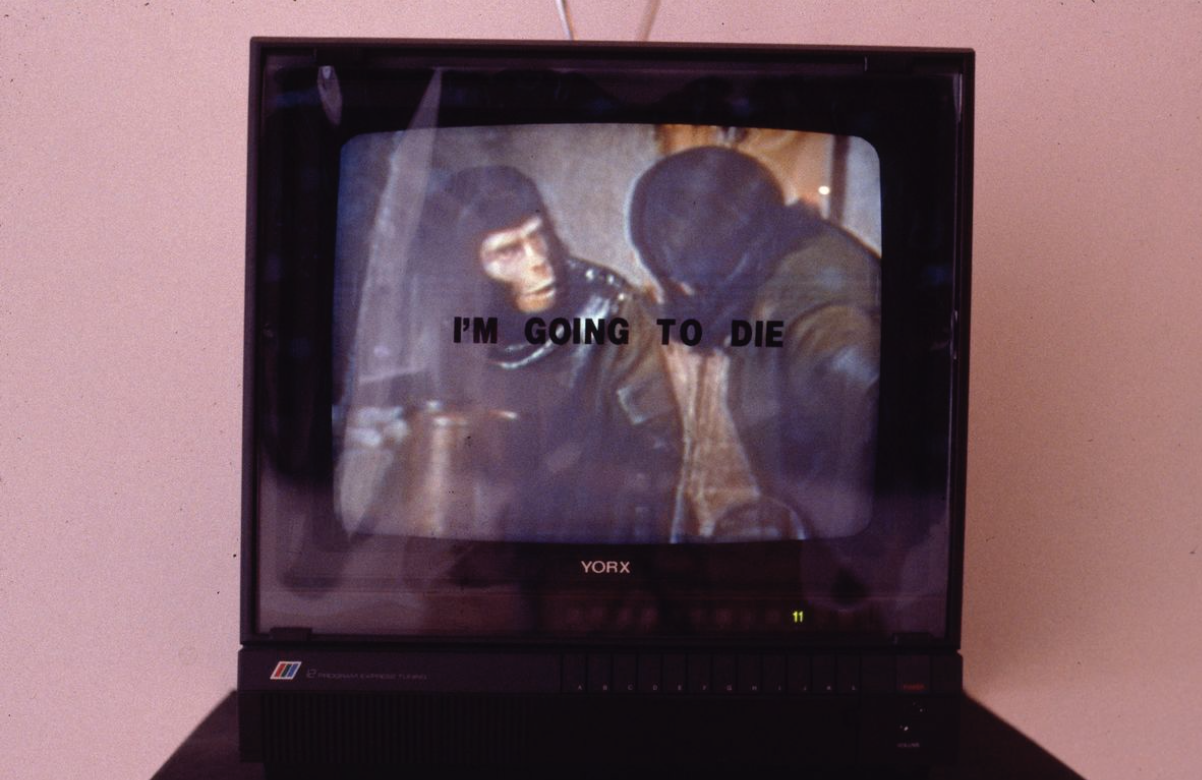
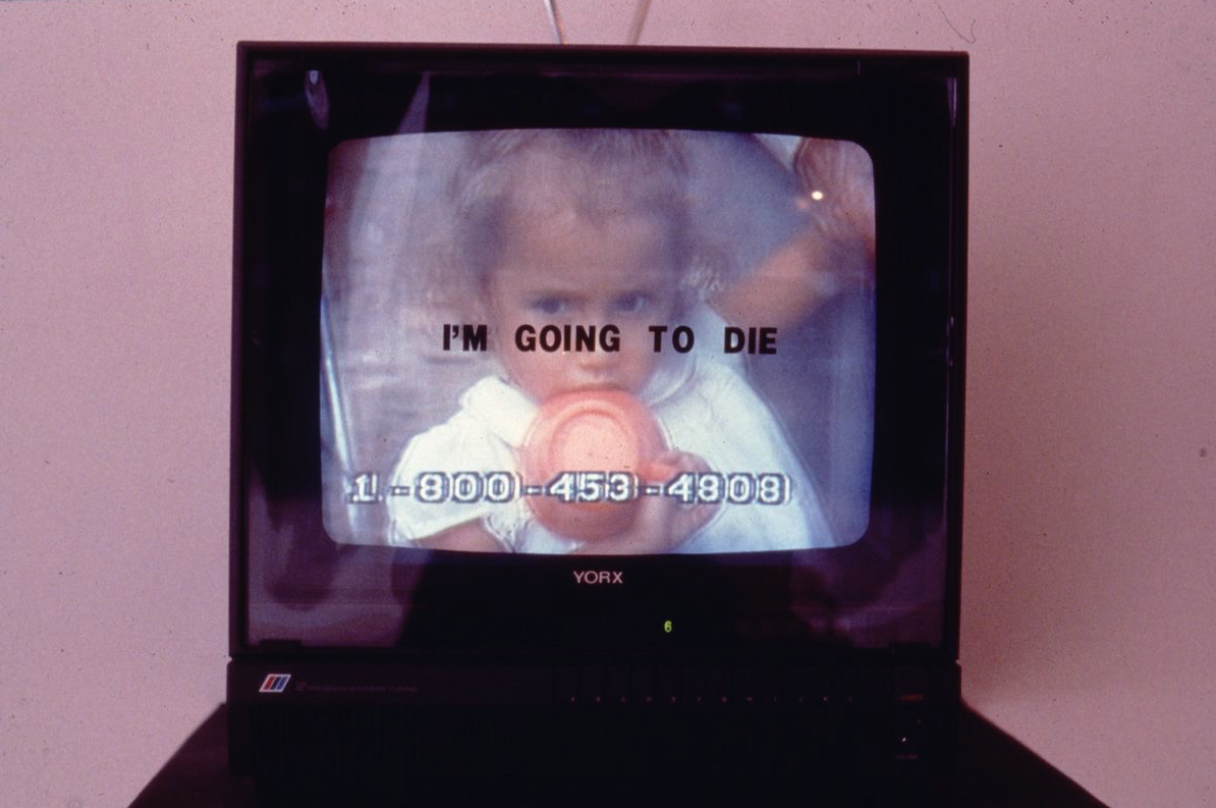
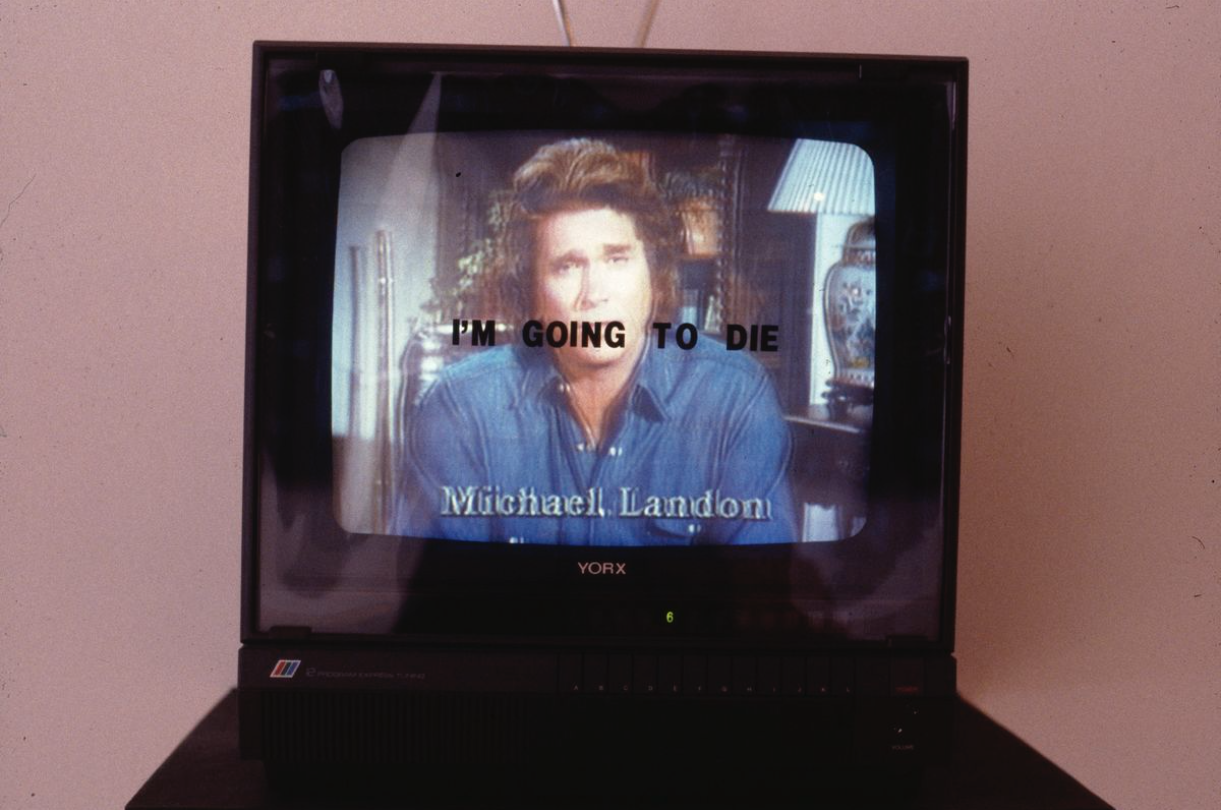
Megadeth Peace Sells But Who’s Buying? (1986)
In Megadeth’s ‘Peace Sells But Who’s Buying?’ (1986), Bender’s breakneck, potentially epilepsy-inducing editing technique complements Dave Mustaine’s high-strung thrashing. Images of the band on stage playing to a mass of head-banging burnouts are incessantly intercut and overlaid with close-ups of Mustaine’s sneering mouth, licking flames, rapidly pulsating images and logos (a dollar sign, a peace sign, Jesus, and so on) and news images recognizable to anyone who lived through the 1980s: bombed-out refugee camps, Ronald Reagan good-naturedly disregarding reporters’ questions at a press conference, hungry-eyed children in Africa. These only let up midway through, when we suddenly zoom out to an irate father, grabbing the remote control and haranguing his long-haired teenage son, who’s watching the video on TV, ‘What is this garbage? I want to watch the news!’ at which point the boy flips back the channel to Megadeth, scoffing: ‘This is the news!’
New Order Bizarre Love Triangle (1986)
This overloaded nowness was present in another video on display, New Order’s rather more cool-to-the-touch but, in its way, no less unrelenting ‘Bizarre Love Triangle’ (1986), which, like ‘Peace Sells’, was edited by Bender and directed by Longo. Alternating rapidly between images of the band and stock-media footage – flowers undergoing an accelerated blooming, commuters marching to work, exploding fireworks and babies’ faces, alongside Longo’s signature freefalling businessmen and some abstracted, pixilated frames – Bender’s editing can be described as almost sculptural, certainly textural. Even though these images create a single cosmology – simultaneously Utopian and apocalyptic – they still palpably chafe against each other as they are reshuffled in line with the music’s inexorable beat.
America’s Most Wanted (Opening Credits) (1988)
Bender designed the credits for the TV show America’s Most Wanted, which Roberta Smith of the New York Times suggested “may have originated the rapid-fire hyperediting now pervasive in film, television and video art.”
Untitled (“Nostalgia”) (1989)
Bender’s art was infused with Marxist-Feminist theory (Theodor Adorno, Michel Foucault, Hélène Cixous, Julia Kristeva, and Vilém Flusser) and she didn’t care if her barbed politics in her works kept the viewer at arm’s length. Indeed, she seemed to want the takeaway to be a heightened awareness of the conflicts and mediations they embodied.
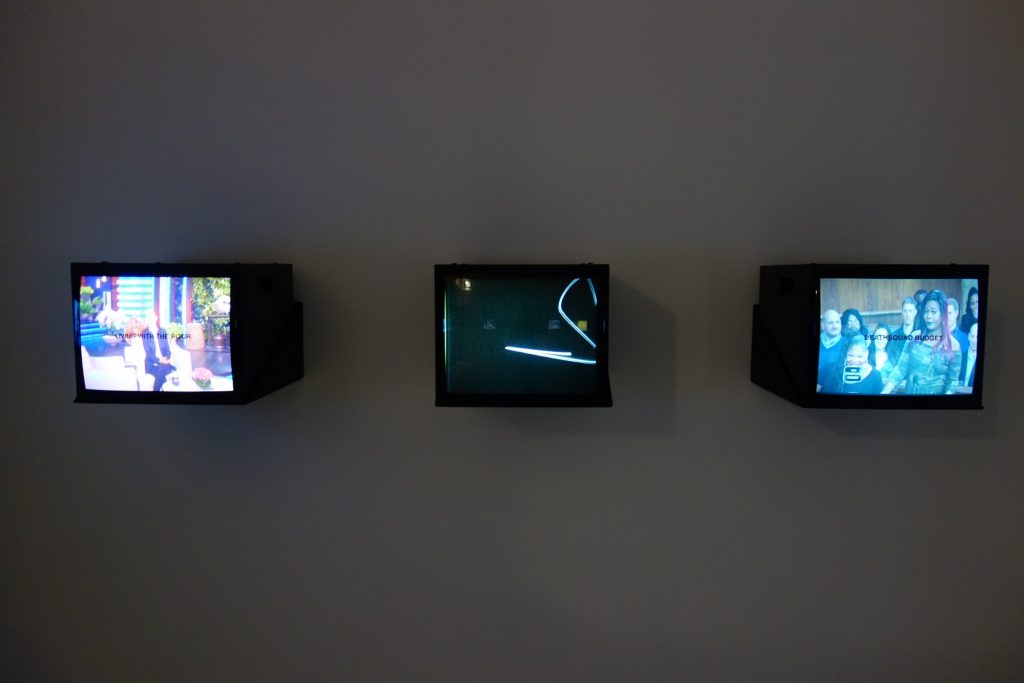


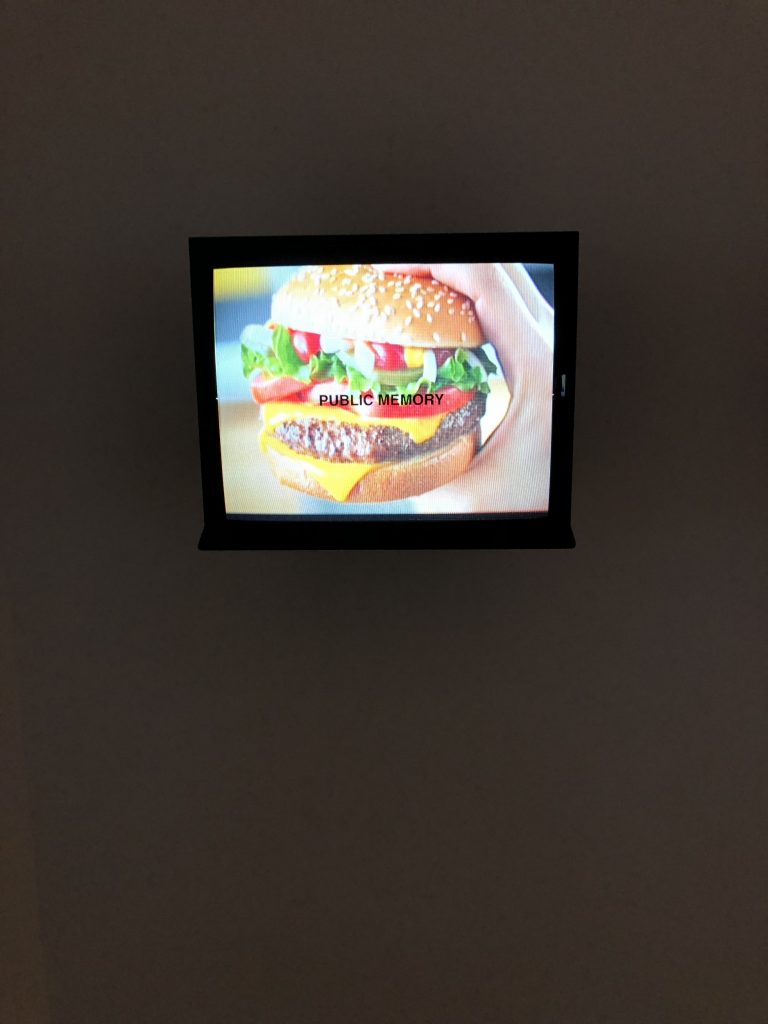
Gremlins (1984)
Four parts; laminated colour photographs, support: 660 x 838 mm, each panel displayed: 1321 x 1676 mm.
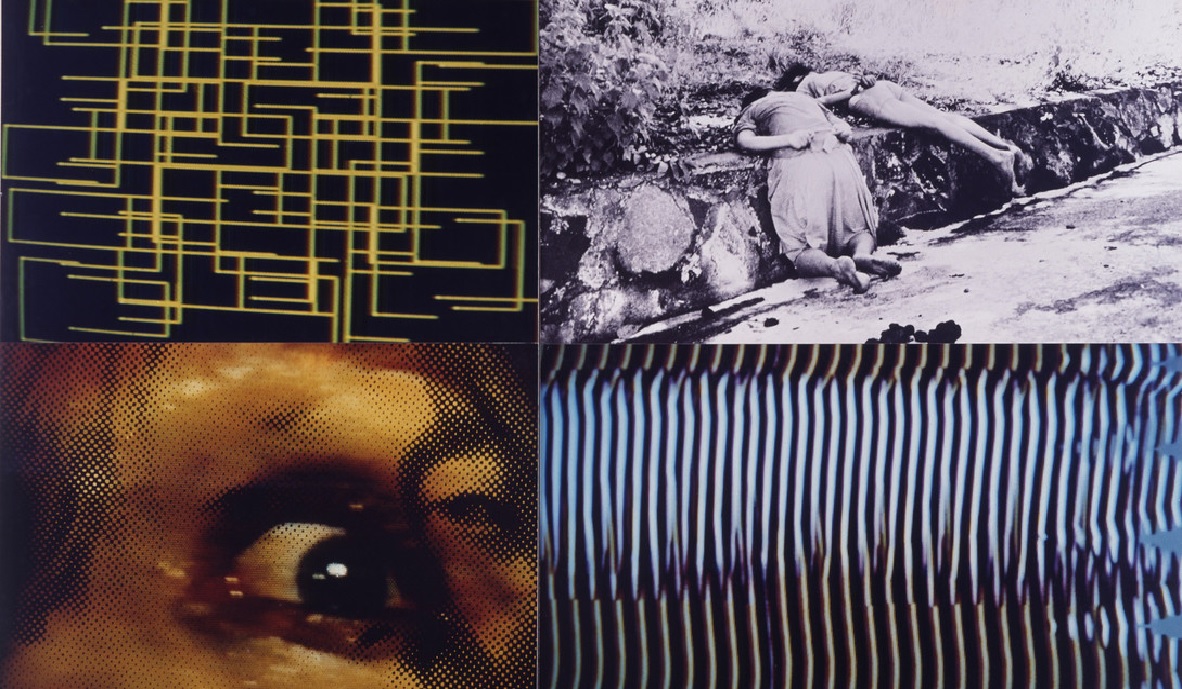
Untitled (“Daydream Nation”) (1989)
Photographs on Masonite mounted on wooden armature.
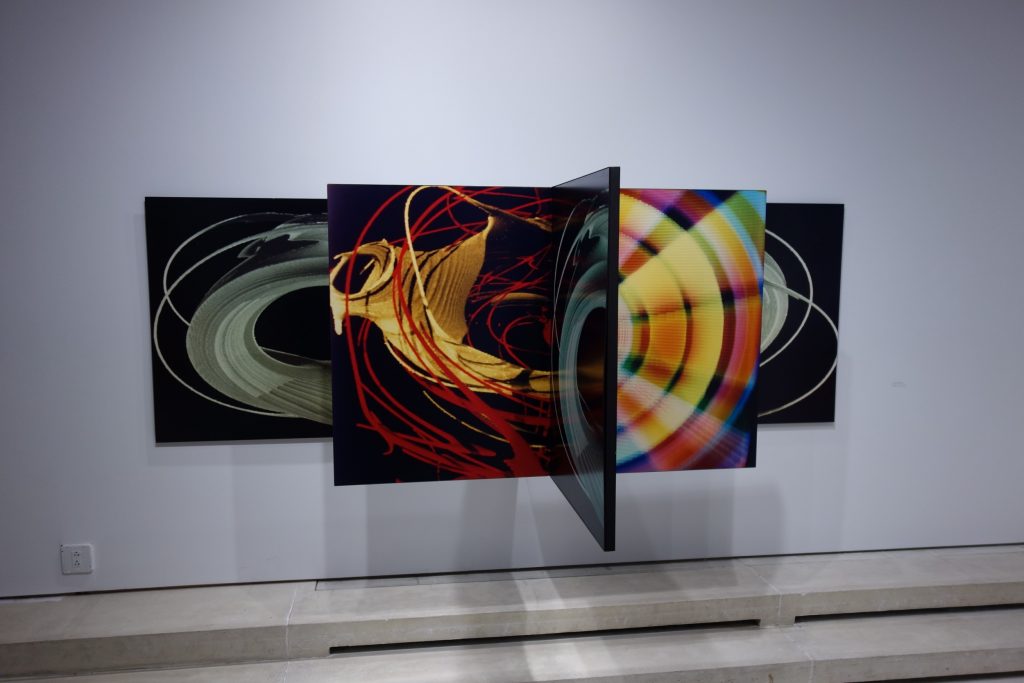
Dumping Core (1984)
Gretchen Bender’s Dumping Core (1984) is a rapid-fire, multi-channel video installation that plays out over 13 monitors arrayed throughout a black box gallery. The improbability of the existence of one of Bender’s major works was already next-level. MoMA apparently helped restore or recover the work, which had only been exhibited as an abbreviated documentation video as recently as 2013.
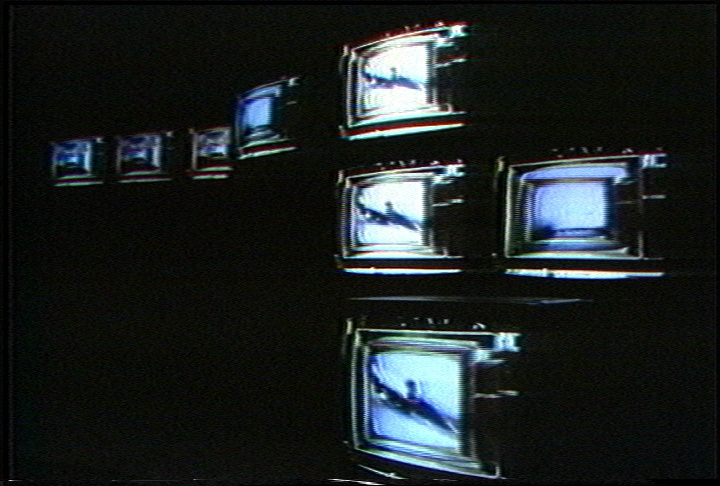
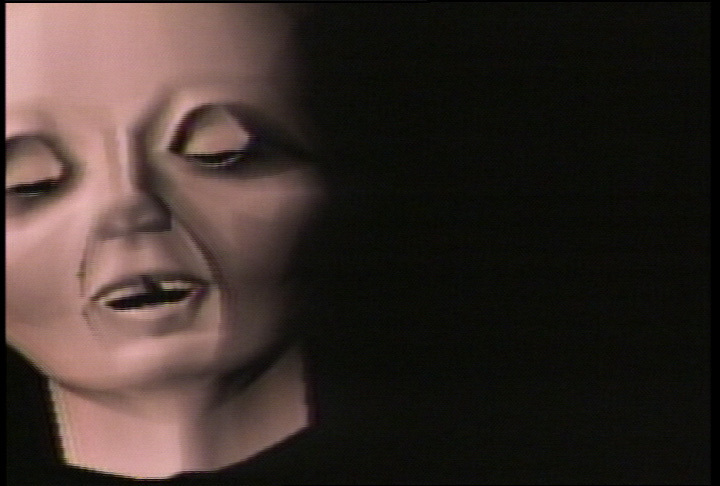
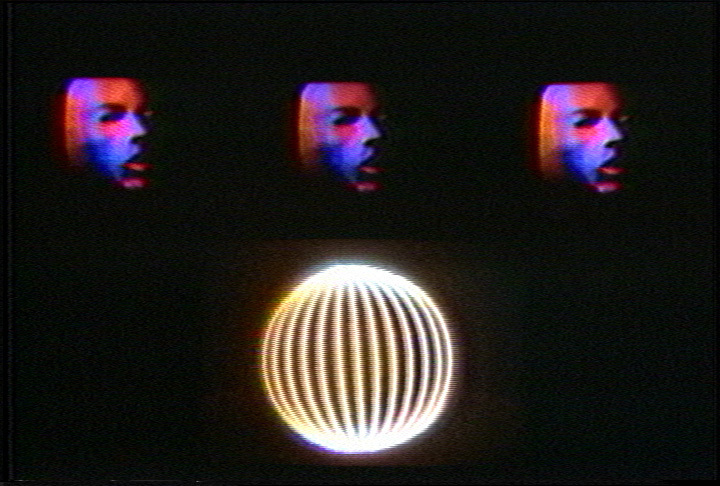
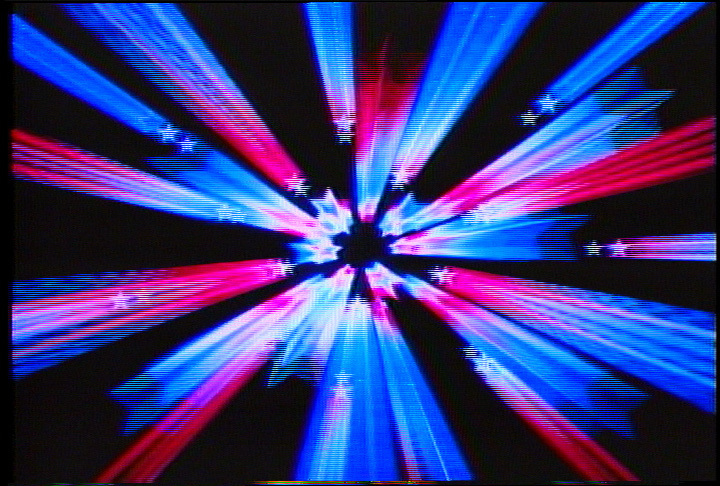

Overviews
So Much Deathless – Exhibition Trailer
“So Much Deathless” via theObjectified
*
p.s. Hey. ** David Ehrenstein, Hi. Well, first, they’d probably burn your house down for calling them Goths, haha, and being scary or attempting scariness as Death Metal-ers usually do requires a fair amount of make up and additives, just ask Boris Karloff. Ah, yes, Bertrand Cantat, speaking of scary. Everyone, Mr. Ehrenstein says, ‘Available On Request: A Complete list of the CDs I’m selling for 7 bucks a pop.’ ** Bill, Hi. That’s kind of been my impression re: the Vuong novel. But he’s quite a good poet. Which doesn’t always transition into good prose, especially if poets see prose as being something else entirely. Okay, let’s do a dinner there whatever season it is when I next end up in your realm. Ah, shame that the Blue Note documentary took that tack, but I guess it was inevitable. I was hanging out this summer with a young Australian filmmaker, Amiel Courtin-Wilson, who’s made a documentary about Cecil Taylor. I don’t believe it’s been officially released yet. He basically moved in with Cecil Taylor about a year before his death and lived with him for several weeks, filming that time. It’s an amazing film. I’ll let you know when it’s out. ** Steve Erickson, I have not seen ‘End of the Century’ but I have heard about it and great things about it. I’ll look to see what its status is re: Paris. Thank you. Nor have I seen ‘Crime Thief’. That sounds very curious. Huh. I’ll hunt it. Les Légions Noires are very legendary here and a source of much pride amongst French music followers and musicologists given the rest of the world’s impression that France isn’t exactly a guitar music producing Zeus of a place. ** Misanthrope, Ha ha, did my sentences seem over the top? Unintended. I like non-paragraphing. Bernhard, Guyotat, that dude the other day, etc. I don’t think I’ve ever managed to do it in my work unless I’m spacing, but I have angled towards that form in hopes sometimes. I do like all the internal concentrated rhythm possible in that style, but I also like combining that with the big rhythms you can create with in-your-face line and paragraph breaks. My impression of Self in my limited encounters — watching him read three times, conversing with him once — is that he is very, very self-centered. How much post-first draft editing and refining do you think you’ll be doing? Can you tell yet? Jesus, LPS has an angel on his shoulder, maybe even on both of them. ** Right. Gretchen Bender is an artist I love. She was really ahead of her time, and her death at a young age really deprived the world of no doubt more and even more amazing work. I present a selection of her works to you today, and I hope you’ll find out what you think. See you tomorrow.





 Now available in North America
Now available in North America 
Wow, Gretchen Bender is great. Wish I could have had the chance to see her stuff up close. Seems like she’s made a pretty big influence culturally as well, with her dipping into some mainstream areas with some success – kinda subversive. Really cool. Thanks for this, Dennis.
Dennis – been catching up on the blog. Hey – I met Bernard the other week – what an absolute gem of a man! Cool to read that you’re into your novel. I can’t get over how good that excerpt in the anthology that we are in is … the movement of the prose is really something, man. Can’t wait to read more! Although I will, of course. As long as you need. I’ll just be doing it in as polite a way as impatience can be embodied. I just had a coffee – I’m feeling like it shows.
Stuff here is cool … had some time off so I’ve been working away at my novel. Finally worked out how to end the thing, which has then had a backwards domino impact on a lot of other stuff in there which has been cool. Tightening the screws and letting other bits rattle where they need to. I’ll be in Paris September 31st until October 5th … hoping you might be about?
Thomas xoxo
Gretchen Bender continues the work of Guy Debord by other means.
Does the documentary on Cecil go into the fact that he had AIDS? As far as I know this wasn’t mentioned in the obits though he had been out about it for a great many years. Cecil was A Real Piece of Work. As I trust you recall he had a Big Affair with Bill back in the day and back when we were living in New York more or less DEMANDED that Bill dump me and go away with him. He said this to Bill privately while being very nice and polite to me publically. There’s a new doc about Miles Davis coming out, that doesn’t go into the fact that Miles was gay — something his wife (who we knew slightly) was not averse to telling the whole world about. Cecil had a long-running and quite hilarious bitch-fight with Miles. They would show up at each others performances and walk out after a few minutes. They were the Be-Bop “Mapp and Lucia”
I am in “Facebook Jail” for a week (barred from posting there) for posting the following: “The White Race is the Cancer of Human History” — Susan Sontag, 1966
I have posted this many times before but someone has apparently taken exception to it and notified the robots who run Facebook. So please contact me by e-mail : cllrdr@ehrensteinland.com
The Cecil documentary sounds fascinating – definitely want to see it. Also – thanks David E for your personal insight into a fascinating character.
A VERY Important Washington Post piece on Hate Crimes and the fact that while they exist D.A’s refuse to use them This should make Patient Less Than Zero (aka. Andrew Sullivan) quite happy as he isopposed to them for “Free Speech” reasons or something
This Day is kind of a big deal to me, because Gretchen is a rare instance of a significant artist I actually knew. (Showing up at the same events and occasionally parties.) in the 80s, after she moved to New York, I knew she was associated with Robert Longo—who made a real impression at the Corcoran, one of those desks where a visitor changed the way students made art — and followed her work, though I never saw her. I was unaware that she was having a Renaissance and unaware that she’d died. She was very cool, much more sophisticated than I was used to seeing in artists in dc, and had star quality. It’ll be interesting to see where her legend goes next. Given my interests, and even what I’ve taught, it’s kind of weird I haven’t been more diligent about learning the history of media critique.
Since I saw you, I’ve benefited from your posts of the Tim Dlugos and Jack spicer dats, two of the poets I think about the most (and when I’m in a poetry writing/editing period, I reread my faves a lot in order to steal from them and their methods. They should never have let me near Emily Dickinson, goddamit.) Both the texts and compendia on those days are a real education. I met Kevin a long time ago but it was only when he was working on Poet Be Like God that we got to be long distance friends, and I was as excited about that book as I was years before about Marjorie Perloff’s book on Frank O’Hara. (A serious academic critical with on Frank O’Hara?! How can this be?!)
I was so happy Kevin could do serious critical writing without losing his irreverence, maintaining his winky, flirty relation to the reader. (“I don’t know if any of you have ever done any drugs…”— ha)
I am down in Asheville this week, which feels very familiar because it is of course the Paris of the South. Colby is as ever generous and trying to hook me up with stuff, this time the inaugural season of the revamped Asheville Art Museum, reopening with a show in Appalachia Now. This is not too crazy because I’ve gotten very interested in how a revised understanding of the history of this region and its cultures could help shift this thing that’s taken hold in the US that we’re doomed to spreading white nationalism until demographics overwhelm the assholes among us. I have a weird optimistic sense that the Coming of the Robots will finally trigger a realization that the future is not about jobs but about restructuring the economy, and of course the arts already are far more central to economic survival than is generally acknowledged. I mean, it’s either that or feudalism, which is, ok, just as likely now.
What a crazy joke life in the US has become. Greenland. Honestly. Jews are disloyal. Right. There is nothing that is to crazy to show up in the news now.
Saw “Once Upon a Time in Hollywood.” Meh.
I wonder if anyone else is reading Quentin Meillassoux, After Finitude, or got there years before me. Another of those instances of a very smart guy getting down on paper a lot of things that feel very familiar to me that I never tried to put together.
It’s Trump that’s cry, Bernard. The U.s. is simply racist forletting him “get elected”
On a happier note Un ange passé
Bender’s work sounds fascinating and prescient – interesting that she went back and forth between making art critical of the media and jobs like designing the credits for AMERICA’S MOST WANTED.
I saw the dentist today, had my mouth X-rayed and learned that I have a huge cavity in the tooth where I got a crown last year. Almost none of the original tooth is left, and the crown is banging into my gums when I eat. I need surgery to remove the entire tooth, which I’m getting on Friday. Then, several months later, I will need more surgery to put a permanent implant in its place. I’m not looking forward to this, especially because it may mean that I feel too lousy Friday night to attend the post-punk video show at Anthology I programmed, and I know it will wind up costing $$$. But it needs to be done in order to eat without pain!
CRIME THIEF is available for streaming on rarefilmm.com, which is where I saw it.
I’m not familiar with Bender’s work. Wow. Even Total Recall is already technically impressive, especially considering this was 1987! It must have been hell to get the timing to work for the multiple video signals. So sad she died young, and right before this whole digital information thing exploded. Will definitely look out for live installations.
I hadn’t heard about the Cecil Taylor doc, thanks. Will look out for it as well. I hope they have people like David E. telling the juicier stories, and won’t just stick to the sanitized narrative. (Unlikely, I know.)
Good to hear your novel is chugging along. And I’m not surprised that Will Self is umm self-centered.
Bill
Dennis, I like how she’s flirted with the mainstream and remained an artist nonetheless. Kind of did a drive-by and then, “See ya, bitches.”
Hahaha, not over the top but…serious. Like, “Listen, kid, and I’m only going to say this once…” However, even so, I knew you didn’t mean it like that. I could see your face as you’d say that to me in person and the big grin on it.
Really, after what you just wrote there about the long vs. short paragraph thing, I think we agree much more on those things than not. Definitely more, actually. I was nodding my head in agreement the whole time I was reading that.
Oh, thanks for asking. I don’t think it’ll be much. When I do a bit of writing, I usually edit as I go along. For instance, after having finished the couple of pages in this new chapter, I went back over it a few times. When I get back to the chapter, I’ll go over it again, and then start writing the rest. When I’m finished with the chapter, I’ll go over the whole thing again a few times.
In the meantime, I’m writing notes about the chapter I’m working on, as well as notes about previous things that I want to make sure I didn’t “miss.” I’ll even go back, if it’s important enough, to previous chapters and revise parts…and then go over them again a few times.
Works for me, you know?
Yes, LPS…he better hope his luck doesn’t run out some day. Or that those angels on his shoulders don’t get bored and fly off.
And I should’ve said that once the whole thing’s complete, I’ll go over it meticulously, but it should be a lot less to worry about because of having done so much already. But yeah, I’ll rewrite something totally if I have to.